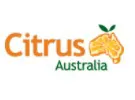 Northern Australia has roughly 10,000km of coastline between Broome and Cairns and it is the Northern Australia Quarantine Strategy (NAQS) that plays a critical role in protecting Australia’s citrus industry.
Northern Australia has roughly 10,000km of coastline between Broome and Cairns and it is the Northern Australia Quarantine Strategy (NAQS) that plays a critical role in protecting Australia’s citrus industry.
NAQS – an operational group within the Biosecurity Plant Division of the federal Department of Agriculture, Water and the Environment (DAWE) – provides early detection for plant and animal pests and diseases.
NAQS Senior Entomologist Dr David Britton and colleagues conduct surveillance for exotic agricultural insect pests in the north to provide early warning for Australian agriculture and assist in responding to these pests by agreement with relevant state and territory authorities.
“Because of our relative isolation Australia is largely free from a lot of significant pests and diseases, but when you get up to the north, we aren’t all that isolated,” Dr Britton said.
“We are really close to PNG [Papua New Guinea], and the islands in Torres Strait could potentially act as steppingstones for exotic pests and diseases to get across to the mainland.”
Plant diseases and pests can enter northern Australia through pathways like human movement, transportation of goods and via natural pathways such as wind, tidal movements and animal migration.
“In the north, one of the risks of greatest concern is wind-assisted dispersal,” Dr Britton said. “When we get into the northern wet season we experience northwesterly ‘monsoonals’ that blow across PNG and Indonesian West Papua, potentially carrying pests and diseases that we don’t have in Australia, into Torres Strait and Cape York.
“That’s probably the most significant pathway in Northern Queensland, although similar pathways are known in the NT and WA.”
These seasonal weather events usually start around December and carry through until May. Dr Britton said that’s when they start to see detections of pests and diseases in Torres Strait.
“This is a definite event that happens every season, but the extent of the risk is quite unpredictable because we don’t always know what’s happening in PNG and western Papua. "They don’t actively use a lot of pest control in those areas, so it’s unpredictable as to how many and what sort of pests we will see blown into Torres Strait each year.”
Fruit fly traps
Dr Britton said NAQS maintains a network of fruit fly traps in Torres Strait, and regularly sends plant health scientists there as part of our active surveillance program.
DAWE staff based in communities in the Torres Strait maintain and clear fruit fly traps. These staff and their communities are the ‘eyes and ears’ for biosecurity in these remote islands and are a critical part of the biosecurity picture in Torres Strait.
Indigenous rangers also support NAQS on the mainland by undertaking biosecurity monitoring work for exotic pests and diseases on a fee for service basis.
“We engage rangers to do host plant surveys on Country, which provides us with data on what and where host plants are present. This includes hosts of agricultural and biosecurity significance such as citrus.
For more information:
citrusaustralia.com.au
